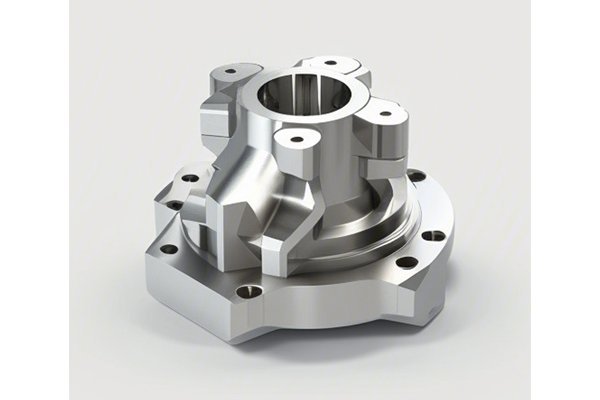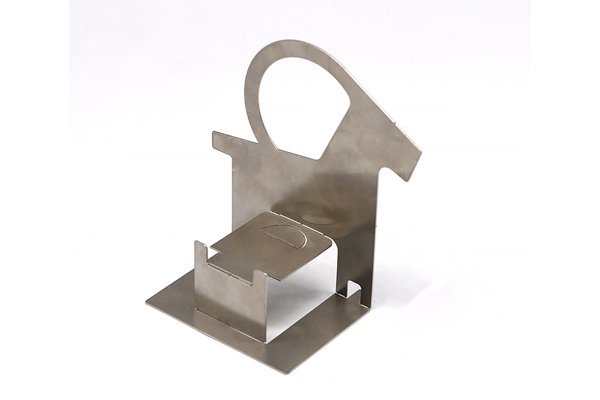Did you know that aluminum is the most widely used non-ferrous metal in the world? With exceptional strength-to-weight ratios and outstanding corrosion resistance, aluminum alloys have established themselves as indispensable materials across various industries, including aerospace, automotive, and electronics. But how do manufacturers efficiently produce custom aluminum parts that meet specific design and performance criteria? The answer lies in the advanced capabilities of CNC (Computer Numerical Control) machining.
In this extensive blog post, we will explore the detailed benefits and processes of CNC machining for custom aluminum alloy parts production. We will dive into the various techniques, specifications, and solutions that define this technology, ultimately providing insights on why it remains the go-to choice for manufacturers today.
—
Understanding CNC Machining
Before we delve into the benefits of CNC machining for aluminum parts, let’s first clarify what CNC machining entails.
CNC machining is an automated manufacturing process that involves the use of computer-controlled machines to shape and fabricate parts from solid blocks of material. Unlike traditional machining methods that require manual adjustments and setups, CNC machining leverages precise programming and cutting tools to achieve intricate designs and repeatability.
Key Highlights of CNC Machining:
The Allure of Aluminum Alloys
Aluminum alloys are critical in manufacturing due to their unique properties. They are lightweight yet strong, making them ideal for applications that demand efficiency without compromising durability. The addition of alloying elements such as copper, magnesium, and silicon enhances the mechanical and chemical characteristics of aluminum, allowing for the development of high-performance parts.
Common Applications of Aluminum Alloys:
Benefits of CNC Machining for Custom Aluminum Alloy Parts
CNC machining is renowned for its precision. High-resolution machining tools and advanced software ensure that parts are manufactured to exact specifications, often within tolerances as tight as ±0.005 mm. This level of accuracy is vital, especially in industries like aerospace and automotive where standards are strict.
Solution: To achieve precision, manufacturers should invest in high-quality CNC machines integrated with advanced software capable of complex calculations. Calibration and maintenance of the machines also ensure optimum performance and accuracy.
Aluminum alloys can be shaped into intricate designs that are often difficult or impossible to achieve through traditional machining methods. CNC machining enables the production of complex geometries, such as curved or angled features, with multiple axes of movement.
Solution: Utilizing 5-axis CNC milling machines allows manufacturers to achieve complex part designs in a single setup. This reduces the need for secondary operations and streamlines the manufacturing process.
One of the key advantages of CNC machining is its ability to reduce production time. The automated processes enable faster cycle times, allowing large batches of parts to be produced in less time compared to manual techniques.
Solution: By optimizing machine settings, reducing tool changeover times, and employing efficient workholding devices, manufacturers can maximize uptime and expedite production.
When it comes to custom parts, CNC machining excels by allowing rapid adjustments to accommodate design changes. This flexibility is invaluable in response to client demands or market changes.
Solution: Implementing modular designs in CNC machines can help manufacturers switch between different part designs more easily, leading to reduced lead times.
While the initial setup for CNC machines may be high, they are cost-effective in the long run, particularly for small to medium production runs. The reduced labor costs combined with high consistency mean that CNC machining can save both time and money.
Solution: Manufacturers should evaluate production volumes to determine whether CNC machining is the most economical solution. Automated quotes and project management tools can help lower costs by optimizing production schedules.
Although this blog centers around aluminum alloys, CNC machining is capable of working with a broad spectrum of materials, including various metals, plastics, and composites. This makes it an incredibly versatile option for manufacturers looking to diversify their offerings.
Solution: Investing in machines that can handle multi-material machining can open doors to new market opportunities, allowing companies to offer a comprehensive range of parts.

CNC machining minimizes material waste due to its precision cutting capabilities. Parts are cut from larger blocks with little scrap material generated, making it a more sustainable choice.
Solution: Implementing practices such as recycling scraps and optimizing designs to reduce material use further enhances sustainability.
CNC machining offers various finishing techniques, including anodizing, powder coating, and polishing, that can enhance the physical and aesthetic qualities of aluminum parts.
Solution: Partnering with finishing services to anticipate customer needs for surface treatment during the design phase ensures that the final products meet the required specifications.
The CNC Machining Process for Custom Aluminum Parts
To fully appreciate the benefits of CNC machining for aluminum alloy parts, it is crucial to understand the step-by-step process involved:
Step 1: Design
Everything starts with a design concept. Using Computer-Aided Design (CAD) software, engineers create detailed blueprints of the part. This software allows for precise manipulation of the design and easy adjustments.
Step 2: CAM Programming
Once the design is established, the next step is Computer-Aided Manufacturing (CAM) programming. This involves translating the CAD model into a language that CNC machines can understand. The CAM software generates a toolpath, detailing the cutting strategies.
Step 3: Material Selection
Choosing the right aluminum alloy is critical to achieving the desired mechanical properties. Common aluminum alloys utilized in CNC machining include 6061, 7075, and 2024, each offering various characteristics tailored to specific applications.
Step 4: Machining
The programmed CNC machine begins to cut the aluminum block according to the specified toolpath. This step may involve different techniques such as milling, turning, and drilling, depending on the part’s design.
Step 5: Quality Control
After machining, meticulous quality control measures ensure that the parts meet the required specifications. This can include both visual inspections and using precision measuring instruments.
Step 6: Finishing
If necessary, finishing processes are applied to enhance the part’s performance and aesthetic appeal. This may also include anodization, which increases corrosion resistance and surface hardness.
Step 7: Delivery
Finally, the finished product is packaged and delivered to the client, often with accompanying documentation detailing manufacturing processes and quality assurance measures.
Challenges and How to Overcome Them
While CNC machining for custom aluminum alloy parts offers numerous benefits, it does come with its own set of challenges.
Challenge 1: Initial Setup Costs
The investment in CNC machinery can be substantial. However, financing options, leasing equipment, or utilizing contract manufacturing can help alleviate the burden.
Challenge 2: Programming Complexity
The necessity of skilled personnel to program and operate CNC machines can be a barrier. Investing in employee training programs can enhance capabilities and lead to better utilization of the technology.
Challenge 3: Material Limitations
Certain alloys may pose challenges in machining due to hardness or brittleness. Conducting material studies and experimenting with different tools can help find the right solutions.
The world of manufacturing is constantly evolving, driven by technology and the need for efficiency. CNC machining stands out as a key player, particularly for producing custom aluminum alloy parts with precision and speed. Its accuracy, versatility, and ability to accommodate complex designs make it an ideal solution for various industries.
In exploring the nuanced advantages, rigorous processes, and potential challenges of CNC machining for aluminum alloys, we can conclude that its role in modern manufacturing is both significant and transformative. Knowledge about these techniques not only empowers manufacturers to improve their production capabilities but also aids in the pursuit of innovation and excellence.
Remember, the manufacturing landscape continues to change. Understanding and adopting advanced machining techniques will not only keep your operations competitive but also ensure you remain at the forefront of your industry.
Final Thoughts
In light of the insights provided, I encourage readers to reflect on the importance of CNC machining in their production strategies. Whether you’re a seasoned manufacturer or new to the field, considering CNC machining as a viable solution may lead to remarkable improvements in your operational efficiency and product quality. Embrace the potential and consider how you can incorporate these techniques into your processes today.






